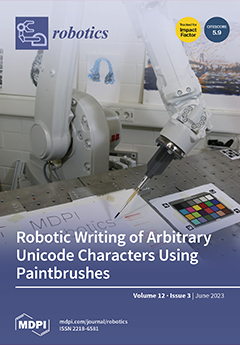Paraconsistent Annotated Logic (PAL) is a type of non-classical logic based on concepts that allow, under certain conditions, for one to accept contradictions without invalidating conclusions. The Paraconsistent Artificial Neural Cell of Learning (
lPANCell) algorithm was created from PAL-based equations. With
[...] Read more.
Paraconsistent Annotated Logic (PAL) is a type of non-classical logic based on concepts that allow, under certain conditions, for one to accept contradictions without invalidating conclusions. The Paraconsistent Artificial Neural Cell of Learning (
lPANCell) algorithm was created from PAL-based equations. With its procedures for learning discrete patterns being represented by values contained in the closed interval between 0 and 1, the
lPANCell algorithm presents responses similar to those of nonlinear dynamical systems. In this work, several tests were carried out to validate the operation of the
lPANCell algorithm in a learning from demonstration (L
fD) framework applied to a linear Cartesian robot (gantry robot), which was moving rectangular metallic workpieces. For the L
fD process used in the teaching of trajectories in the
x and
y axes of the linear Cartesian robot, a Paraconsistent Artificial Neural Network (
lPANnet) was built, which was composed of eight
lPANCells. The results showed that
lPANnet has dynamic properties with a robustness to disturbances, both in the learning process by demonstration, as well as in the imitation process. Based on this work, paraconsistent artificial neural networks of a greater complexity, which are composed of
lPANCells, can be formed. This study will provide a strong contribution to research regarding learning from demonstration frameworks being applied in robotics.
Full article





